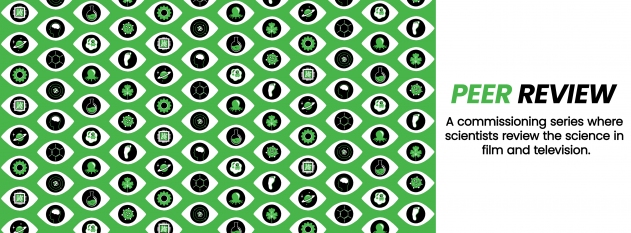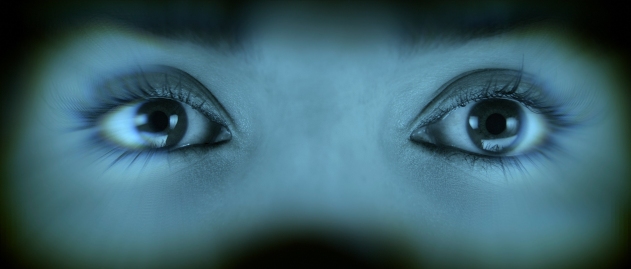

Please note: This article contains some spoilers.
3 BODY PROBLEM is a sci-fi series on Netflix dealing in weighty, big ideas about alien life, and exploring the scenario of first contact with a decidedly unfriendly ET.
Chinese physicist Ye Wenjie (Rosalind Chao, Zine Tseng) is working at a top-secret military base, sending signals out into the universe in the hope of making first contact. She receives a bone chilling reply: “I am a pacifist of this world. It is the luck of your civilization that I am the first to receive your message. I am warning you: Do not answer! Do not answer! Do not answer!” Disillusioned with the conflicts raging on Earth, Ye replies anyway, setting in motion a series of events that might eventually destroy humanity and the whole planet.
Interestingly, humans have actually sent radio signals like this before both intentionally and unintentionally. Since the dawn of broadcasting around the turn of the 20th century, signals from our radios and televisions have been leaking out into the cosmos, creating a so-called “radio bubble” around Earth. These waves travel at the speed of light, meaning that an 85-year-old broadcast from World War II would have traveled about 85 light-years by now. There are thousands of stars located within that 85-light-year-wide bubble—thousands of stars that may have received our messages.

3 BODY PROBLEM. Image courtesy of Netflix.
There is a catch to this kind of signal transmission, though. These leaking radio waves are diffuse, and only become more diffuse as they spread out throughout the cosmos. Actually detecting them from 85 light-years away would be a significant challenge. An intentional, directed message, however, might have a better chance of being picked up. In 1973, the giant Arecibo Telescope in Puerto Rico sent the famous “Arecibo message” towards the globular cluster M83, conveying our system of counting numbers, the elements that make up our DNA, the dimensions of an average human, a description of our solar system, and more. Although the Arecibo message hasn’t reached its destination (and won’t for another 25,000 years or so), other messages from Earth have either reached their targets or will within the next decade.
Many of these messages were sent with a spirit of hope, imagining a STAR TREK-esque future where many species co-exist peacefully to explore the cosmos and further our understanding of the universe. 3 BODY PROBLEM looks at the other side of the coin: what if broadcasting our location puts a target on our backs, leading to our destruction? Some scientists levied the same criticism against communications like the Arecibo message at the time of their inception, worried that it is too risky to reach out first.
Nowadays, most of the Search for Extraterrestrial Intelligence (SETI) is passive, with humanity simply listening in for signals from beyond the solar system. The detective in 3 BODY PROBLEM, Da Shi (played by Benedict Wong, of Marvel’s DOCTOR STRANGE fame), even cites a real example of a possible extraterrestrial communication: the “Wow!” signal, detected by a radio telescope in Ohio in 1977. This was a 72-second pulse of radio waves, thirty times stronger than the background radio noise from outer space and unlike anything we’ve seen from natural sources. Back in the day, data was printed out as a string of letters and numbers on sheets of paper, instead of being stored in digital memory. This particular signal stood out so much that observer Jerry Ehman famously circled a bit of data on the page with red ink and marked it with the word “Wow!” To date, this is the most tantalizing observation radio SETI projects have detected. It remains unexplained and hasn’t been spotted again. The show also mentions the real-life Green Bank Observatory, one of the world’s major radio telescopes located in the wilderness of West Virginia nestled in the U.S. National Radio Quiet Zone, which is a regular participant in SETI searches.

3 BODY PROBLEM. Image courtesy of Netflix.
In the 3 BODY PROBLEM, once it’s clear that aliens know about Earth and do not look at us in a positive light, the team of scientists start their problem solving, brainstorming ways to counter the threats of the aliens referred to as “Trisolarans.” The Trisolarans, whose home world is a planet with multiple suns, are the inspiration for the show’s name. The “three body problem” refers to the dynamics of their home system, a notoriously tricky problem in physics where the motions of the orbiting objects can become quite chaotic. Unlike many other natural phenomena that can be explained by simple equations—think Kepler’s laws, the ideal gas law, and anything else you may have encountered in high school science—the three body problem can’t be explained by one tidy line of math. Living around multiple stars would also present challenges, with much wackier weather than we can imagine. This climate mayhem, in fact, is what drives the Trisolarans to leave their home planet and take Earth for themselves.
In the show, one of humanity’s first solutions to the alien threat involves sending a probe to intercept the Trisolarans on their way to Earth. The aliens are nearly 400 light-years away, however, which is a nearly impassable distance for us to travel. In reality, our current fastest spacecraft, the Parker Solar Probe, is swinging around the sun at 394,736 miles per hour—and even that would take hundreds of thousands of years to cross 400 light-years. The sci-fi solution proposed by the show’s theoretical physicist character, Jin Cheng (Jess Hong), involves a light sail propelled by radiation, from nuclear bombs.
But, light sails are actually closer to science fact than you may think. The Breakthrough Starshot initiative, funded by private investors, aims to send a tiny probe to the nearest star system to Earth within about 20 years from launch (which they hope will happen in 2036), using one of these light sails. By pointing intense lasers at the light sail, researchers hope to accelerate the spacecraft up to a sizeable fraction of the speed of light (~1-2%), quite similar to Jin’s plan in the show—but instead of counteracting an alien enemy the real-life project plans to take photos of the planet Proxima Centauri b and beam them back to Earth.

3 BODY PROBLEM. Image courtesy of Netflix.
I personally like to think about the search for extraterrestrial life as a positive endeavor. Out of the many solutions to the Fermi Paradox, I prefer the idea that the only civilizations that make it to space-faring stages must be peaceful, a result of the compromise and collaboration necessary to survive their technological adolescence. There are many possibilities for what could be out there in the cosmos, however, and it’s worth considering them all. 3 BODY PROBLEM unfurls the darker side of things, and does so with consideration and detail, including features of real SETI experiments that pop up in the show and make it eerily realistic.
The 3 BODY PROBLEM is also an excellent reminder—especially as we face ethical challenges from technologies such as artificial intelligence and threats to our survival like climate change—that science can be used for both good and evil, and it’s up to us to choose what sort of player we’ll be in the cosmic community.
♦
TOPICS